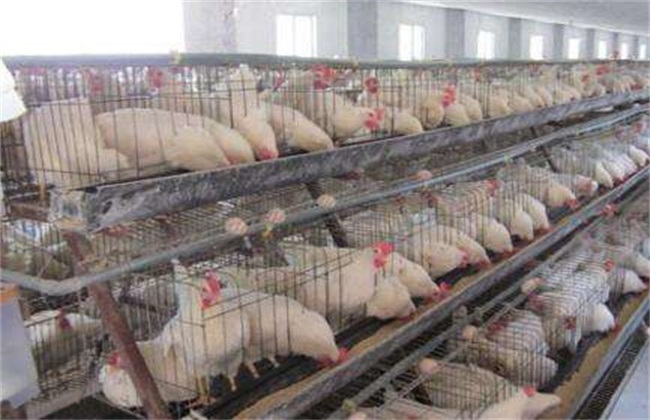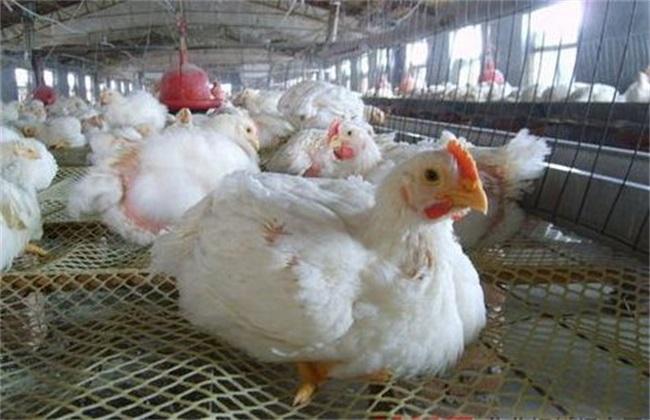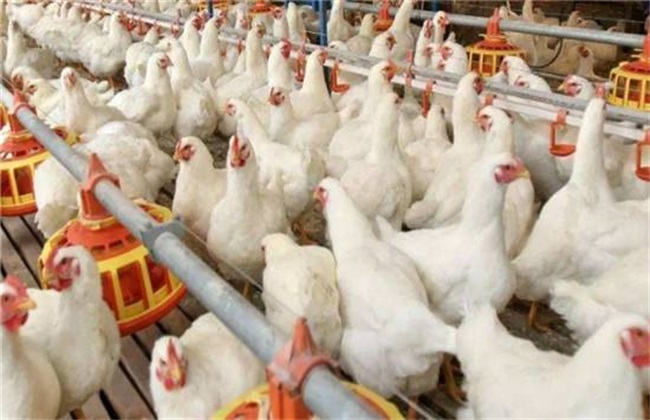Cage rearing technology of white-feathered broilers
In recent years, the chicken market in China has only increased, but among many broiler breeds. White-feathered broilers are the most popular. White-feathered broilers have many advantages, such as high feed utilization rate, low input, convenient management, fast weight gain and so on. Therefore, the breeding area of white-feathered broilers is very large, and the breeding methods of white-feathered broilers are mainly caged. So how to keep white-feathered broilers in captivity? Let's take a look at the caged techniques of white-feathered broilers with Xiaobian.

1. Cage preparation
Before caging, we must first prepare the breeding cage for white-feathered broilers. Cages and chicken coops should first be cleaned with clean water to ensure that there are no dead corners. Because the density of white-feathered broilers raised in cages is relatively high, so disinfection is naturally indispensable. Disinfection should be based on spray or fumigation, so as to ensure comprehensive and thorough disinfection. If the disinfection is not thorough, it will have a great impact on the later feeding and management. During disinfection, the use of disinfectants should be controlled and rotated. When fumigating and disinfecting, the chicken coop should be closed strictly, and there should be no gaps. Potassium permanganate or formalin is the main disinfectant.
2. Preparation before breeding
Before breeding, we also need to prepare all kinds of breeding utensils, such as feed trough, water plants and all kinds of disinfection utensils. Besides, the most important thing is the preparation of feed. Feed must meet the nutritional needs of white-feathered broilers, if it is the preparation of full-price feed, then we should pay attention to its storage time, the longest can not exceed half a month to avoid feed deterioration. Then prepare other feeding materials, such as fuel, vaccine, medicine, etc., and improve them as required. Finally, do a good job of preheating and temperature testing in the chicken house to create a good growth environment for white-feathered broilers.
3. Feeding management
In captivity, we should control the feeding method according to the growth period of white-feathered broilers. In the breeding period, it is necessary to add artificial materials, and when adding materials, the feed should be put into the material plate to allow it to eat freely. Feed about 6 times a day, with a small amount of more feeding as the principle to increase the food intake of chicks. Then in the breeding period, the filler method above machine feeding is mainly, feeding about twice a day. Adjust the feeding times according to the increase of broiler age. Artificial feeding should be done well when necessary to avoid the lack of feed affecting the growth of aborted broilers.
4. Density control
When raising white-feathered broilers in captivity, because the density is relatively high, we should also pay attention to controlling the breeding density. In the nestling period, the cage raising mode is generally the combination of the whole house brooding and the upper cage brooding. During this period, the breeding density should be maintained at about 25 / cage, basically there will not be the phenomenon of crowding each other. Then in the breeding period of white-feathered broilers, the breeding density should be adjusted with the change of season. The feeding density should be reduced appropriately in summer and increased appropriately in winter. Usually about 8-9 animals are raised in each cage.
The above is a brief introduction to the cage technology of white-feathered broilers. That's all for today's introduction. This article is for reference only. I hope it can be helpful to everyone.
Related
- On the eggshell is a badge full of pride. British Poultry Egg Market and Consumer observation
- British study: 72% of Britons are willing to buy native eggs raised by insects
- Guidelines for friendly egg production revised the increase of space in chicken sheds can not be forced to change feathers and lay eggs.
- Risk of delay in customs clearance Australia suspends lobster exports to China
- Pig semen-the Vector of virus Transmission (4)
- Pig semen-the Vector of virus Transmission (3)
- Five common causes of difficult control of classical swine fever in clinic and their countermeasures
- Foot-and-mouth disease is the most effective way to prevent it!
- PED is the number one killer of piglets and has to be guarded against in autumn and winter.
- What is "yellow fat pig"? Have you ever heard the pig collector talk about "yellow fat pig"?



